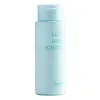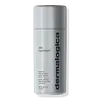What's inside
What's inside
 Key Ingredients
Key Ingredients

 Benefits
Benefits

 Concerns
Concerns

 Ingredients Side-by-side
Ingredients Side-by-side

Microcrystalline Cellulose
AbsorbentSodium Bicarbonate
AbrasiveSodium Cocoyl Glutamate
CleansingSodium Myristoyl Glutamate
CleansingMalic Acid
BufferingSodium Methyl Cocoyl Taurate
CleansingCharcoal Powder
AbrasiveVinyl Dimethicone/Methicone Silsesquioxane Crosspolymer
Maltodextrin
AbsorbentSilica
AbrasiveMagnesium Oxide
AbsorbentOryza Sativa Bran Extract
Skin ConditioningPolymethylsilsesquioxane
Sapindus Trifoliatus Fruit Extract
Skin ConditioningNiacinamide
SmoothingCitrus Aurantium Amara Peel Oil
Skin ConditioningZingiber Officinale Root Extract
MaskingLavandula Angustifolia Oil
MaskingLavandula Hybrida Oil
EmollientCamellia Sinensis Leaf
PerfumingKappaphycus Alvarezii Extract
Skin ConditioningCaesalpinia Spinosa Fruit Pod Extract
Citrus Limon Peel Oil
MaskingRosmarinus Officinalis Leaf Oil
MaskingSalvia Officinalis Oil
MaskingSubtilisin
Skin ConditioningLipase
Skin ConditioningPapain
Skin ConditioningLactic Acid
BufferingOryza Sativa Starch
AbsorbentSodium Chloride
MaskingSodium Dehydroacetate
PreservativeXanthan Gum
EmulsifyingWater
Skin ConditioningCoconut Acid
CleansingCalcium Lactate
AstringentCapryloyl Glycine
CleansingUndecylenoyl Glycine
CleansingCetrimonium Chloride
AntimicrobialLimonene
PerfumingLinalool
PerfumingMicrocrystalline Cellulose, Sodium Bicarbonate, Sodium Cocoyl Glutamate, Sodium Myristoyl Glutamate, Malic Acid, Sodium Methyl Cocoyl Taurate, Charcoal Powder, Vinyl Dimethicone/Methicone Silsesquioxane Crosspolymer, Maltodextrin, Silica, Magnesium Oxide, Oryza Sativa Bran Extract, Polymethylsilsesquioxane, Sapindus Trifoliatus Fruit Extract, Niacinamide, Citrus Aurantium Amara Peel Oil, Zingiber Officinale Root Extract, Lavandula Angustifolia Oil, Lavandula Hybrida Oil, Camellia Sinensis Leaf, Kappaphycus Alvarezii Extract, Caesalpinia Spinosa Fruit Pod Extract, Citrus Limon Peel Oil, Rosmarinus Officinalis Leaf Oil, Salvia Officinalis Oil, Subtilisin, Lipase, Papain, Lactic Acid, Oryza Sativa Starch, Sodium Chloride, Sodium Dehydroacetate, Xanthan Gum, Water, Coconut Acid, Calcium Lactate, Capryloyl Glycine, Undecylenoyl Glycine, Cetrimonium Chloride, Limonene, Linalool
 Reviews
Reviews

Alternatives
Ingredients Explained
These ingredients are found in both products.
Ingredients higher up in an ingredient list are typically present in a larger amount.
Silica, also known as silicon dioxide, is a naturally occurring mineral. It is used as a fine, spherical, and porous powder in cosmetics.
Though it has exfoliant properties, the function of silica varies depending on the product.
The unique structure of silica enhances the spreadability and adds smoothness, making it a great texture enhancer.
It is also used as an active carrier, emulsifier, and mattifier due to its ability to absorb excess oil.
In some products, tiny microneedles called spicules are made from silica or hydrolyzed sponge. When you rub them in, they lightly polish away dead skin layers and enhance the penetration of active ingredients.
Learn more about SilicaWater. It's the most common cosmetic ingredient of all. You'll usually see it at the top of ingredient lists, meaning that it makes up the largest part of the product.
So why is it so popular? Water most often acts as a solvent - this means that it helps dissolve other ingredients into the formulation.
You'll also recognize water as that liquid we all need to stay alive. If you see this, drink a glass of water. Stay hydrated!
Learn more about Water